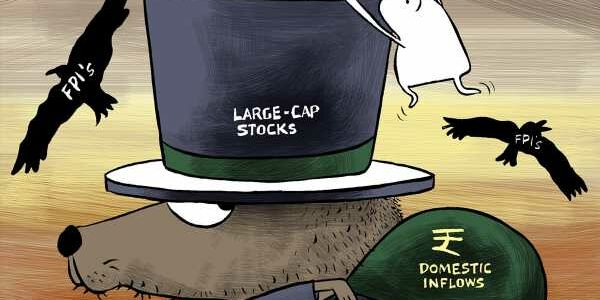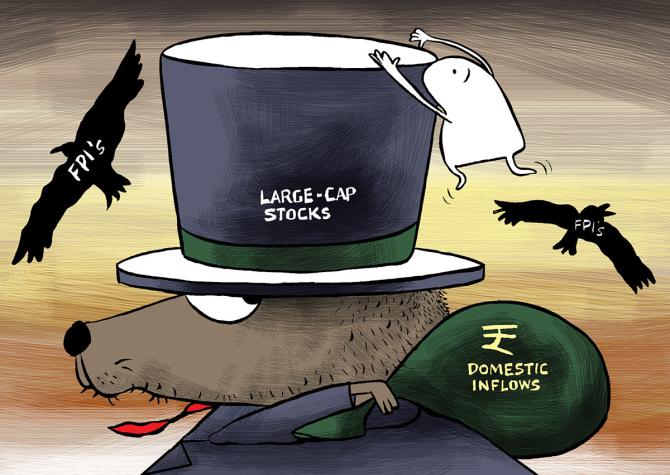
Over 85% active large-cap schemes underperform in 2022
Over 87 per cent of active large-cap schemes failed to outperform the benchmark S&P BSE 100 (total return) in the 2022 calendar year (CY), significantly higher than the 2021 figure of 50 per cent, shows a report by S&P Dow Jones Indices.
During the three-year period (CY 2020, ’21, ’22), the percentage of schemes underperforming the index was even higher at 97 per cent.
While active large-cap schemes generally find it tough to outperform due to a rising efficiency in the market, 2022 proved to be even more challenging as mid-cap and small-cap stocks (where they have some allocation) performed poorly vis-a-vis the large-caps.
In 2022, the S&P BSE 100 TRI rose 6 per cent, while the small-cap index S&P BSE 250 Smallcap TRI ended the year one per cent lower.
The S&P BSE 150 Midcap TRI went up just 3.6 per cent. In 2021, the small-cap index was up 59 per cent, while the large-cap index rose just 26 per cent.
The returns of active schemes also suffered due to them being underweight on Adani Group stocks, which were top performers in the large-cap indices in 2022.
The S&P BSE 100 has five Adani Group companies in Adani Ports and Special Economic Zone, Adani Enterprises, Adani Transmission, Adani Green, and Adani Total Gas.
Two of these companies — Adani Power and Adani Enterprises — delivered over 150 per cent returns last year.
“In 2022, most returns came from select stocks — and Adani Group shares were among them.
“The high dispersion in returns tends to negatively impact diversified active funds.
“Also, active large-cap funds can invest up to 20 per cent in mid-cap and small-cap stocks.
“This allocation creates a drag on returns when mid-cap and small-cap stocks underperform large-caps.
“Lastly, the higher expense ratio of active funds also weighs on returns,” says Vishal Dhawan, founder and chief executive officer, Plan Ahead Wealth Advisors.
Arun Kumar, vice president and head of research at FundsIndia, cites the active funds’ overlap with the index and a higher expense ratio as the reasons for their continued underperformance.
“Higher expense ratios for active funds and high overlap with the benchmark index (average for large-cap category around 60 per cent) has made it extremely difficult for active large-cap funds to consistently outperform their passive peers,” he said.
“To put that into context, at the existing overlap of around 60 per cent, to stay on par with index returns, a large cap fund manager must provide an outperformance of around 2.5 per cent every year on the differentiated portion (around 40 per cent) to account for a 1 per cent difference in expense ratio,” Kumar added.
Other than these factors, market observers say the large-cap space is where the interest of large institutional players, including foreign portfolio investors, is concentrated.
As a result, there is little information asymmetry or the possibility of making outsized gains.
Source: Read Full Article
